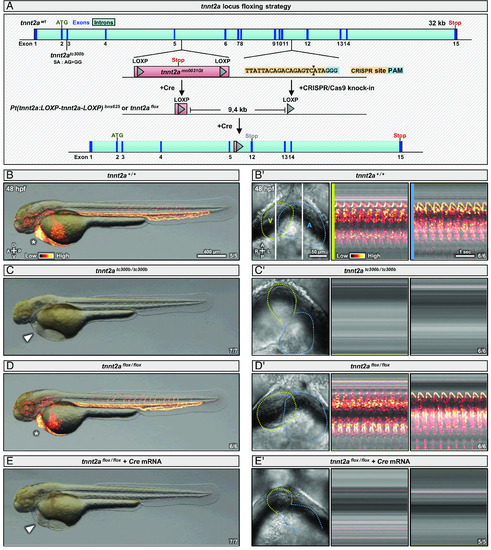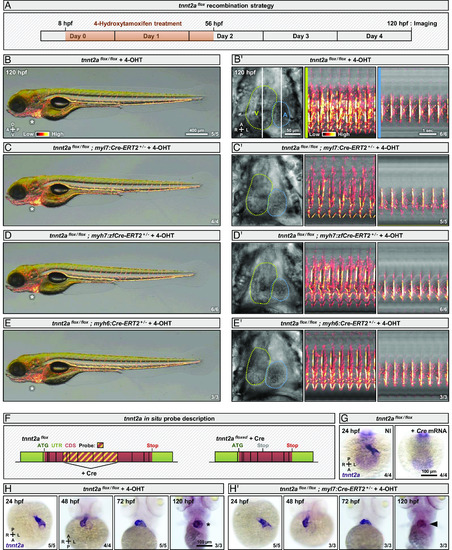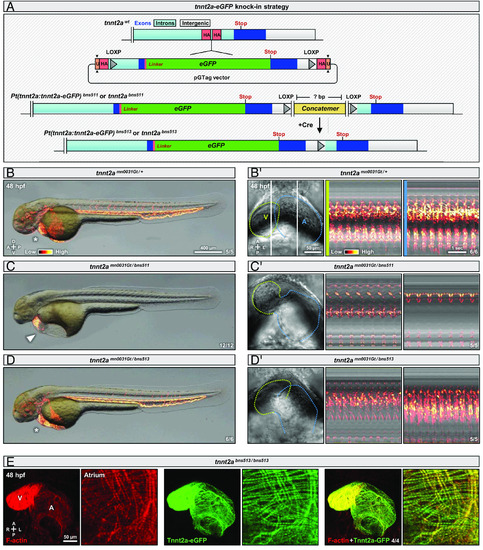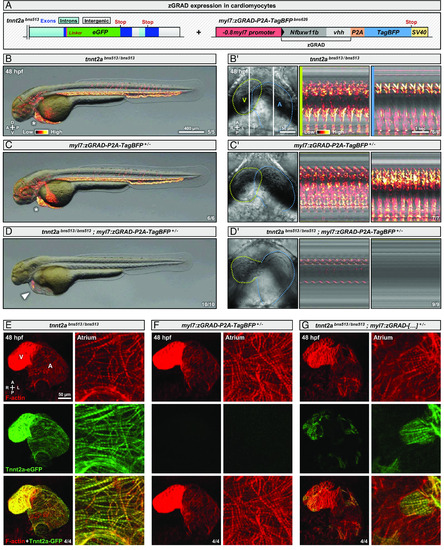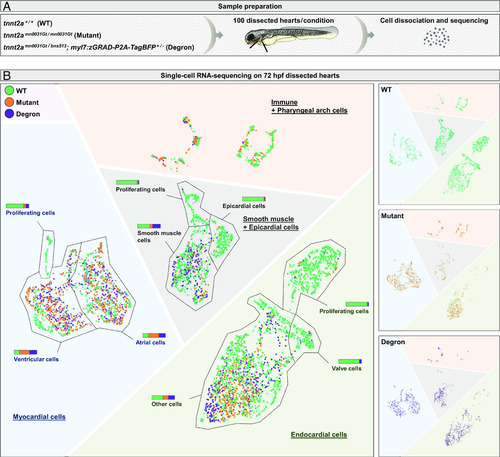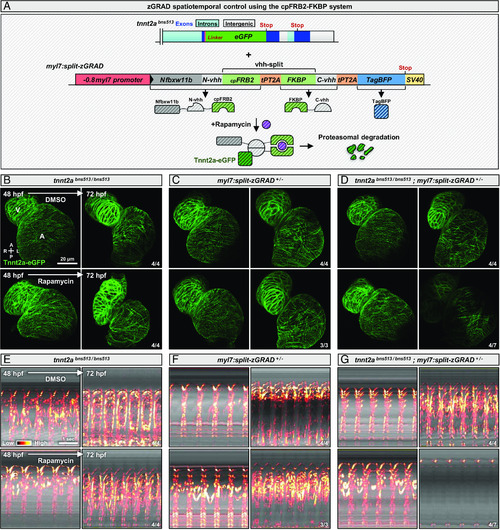- Title
-
Control of cardiac contractions using Cre-lox and degron strategies in zebrafish
- Authors
- Juan, T., Bellec, M., Cardoso, B., Athéa, H., Fukuda, N., Albu, M., Günther, S., Looso, M., Stainier, D.Y.R.
- Source
- Full text @ Proc. Natl. Acad. Sci. USA
|
Global recombination of a floxed |
|
Myocardial Cre-lox-mediated |
|
Viable endogenous eGFP-tagging recapitulates the Tnnt2a expression pattern. ( |
|
Myocardial Tnnt2a-eGFP degradation recapitulates the |
|
The cardiac transcriptomes of Tnnt2a degrons and |
|
The cpFRB2-FKBP system enables fast temporal control of zGRAD activation. ( |

